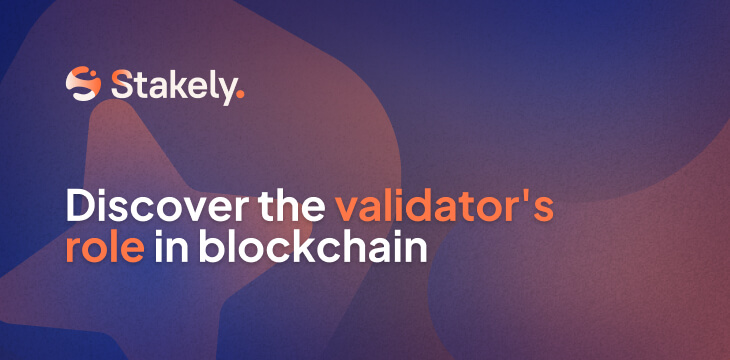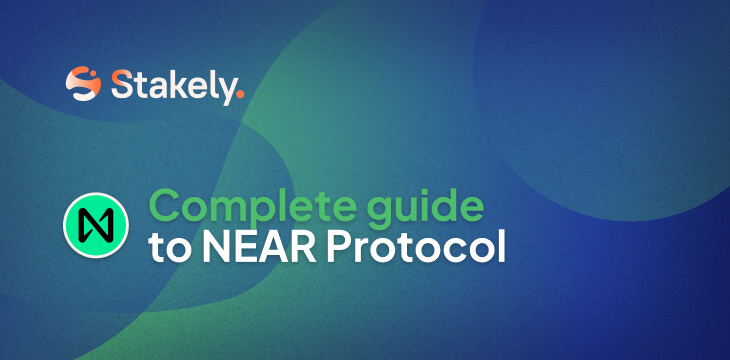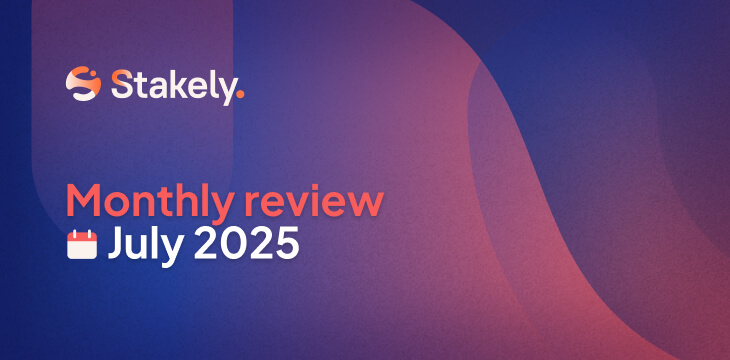The validator's role in the consensus layer and blockchain infrastructure

Validators are key participants in any blockchain network. Without them, there would be no consensus, security, or decentralization. In this guide, we’ll walk you through what a validator does, the technical requirements involved, and how professional validators like Stakely simplify participation in Proof-of-Stake (PoS) networks for users, developers, and institutions.
What is a validator?
A blockchain validator is a node responsible for verifying transactions and proposing or signing new blocks to be added to the chain. Their role may vary depending on the consensus algorithm implemented, but their main objective is to ensure the system’s security, integrity, and decentralization.
Generally, a validator node must lock a certain amount of tokens (put them in stake) to become eligible to create blocks. The protocol randomly selects the validator that will propose the next block, weighting the selection based on the number of tokens staked. The other validators then verify it, and if everything checks out, the block is added to the blockchain.
In PoS systems, validators put their own capital at risk. If they attempt to attack the network, they can lose part or all of their stake through slashing. This model:
- Reduces energy consumption compared to PoW.
- Aligns incentives between security and profitability.
- Makes it easier for users to participate through token stake.
This is why validators are often referred to as the backbone of the blockchain. Unlike traditional centralized systems where a single participant controls everything, blockchain validation is distributed among many independent actors.
Validator responsibilities and technical requirements
Becoming a validator is no easy task, as it involves meeting several key responsibilities, such as:
- Running an active node 24/7: the node must always be online, in sync, and running the latest version of the protocol’s software.
- Ensuring security and uptime: this requires robust infrastructure, including a high-performance CPU, fast storage, stable internet connection, and the implementation of cybersecurity measures such as emergency protocols, geographic redundancy, and real-time monitoring.
- Securely managing private keys: signing keys must be protected with extreme care, preferably using specialized hardware or distributed signing schemes like Obol on Ethereum.
- Actively participating in protocol governance: validators must apply hard forks, security patches, and vote on on-chain proposals.
Stakely as a staking infrastructure and service provider
Given the complexity of operating a validator node, many users prefer to stake their tokens to staking service providers. At Stakely, we operate validator nodes on over 30 PoS networks, including Ethereum, Cosmos, Polkadot, NEAR, and Solana, among many others. On the latter, you can also take advantage of our limited-time promotion: 0% commission when staking SOL with Stakely.
By choosing Stakely as your validator, you can stake your tokens directly from each project’s official wallet. In return, you’ll receive periodic rewards for participating in the network, paying only a small commission. All of this without giving up custody of your assets, since staking doesn’t involve transferring the tokens—just linking them.
Conclusion: validators are the foundation of a secure blockchain
Validator nodes not only ensure consensus but also uphold the stability of the entire network. Our work, although often invisible, allows blockchains like Ethereum, Solana, and Cosmos to operate in a decentralized and reliable way.
Thanks to professional services like Stakely, anyone can participate in consensus through token stake, earning rewards without sacrificing asset custody. Always make sure to choose the best validator, because in blockchain, the network’s security depends on the strength of its validators.
Want to start staking and earning rewards? Discover the benefits of staking and why to stake with Stakely on your favorite networks.





